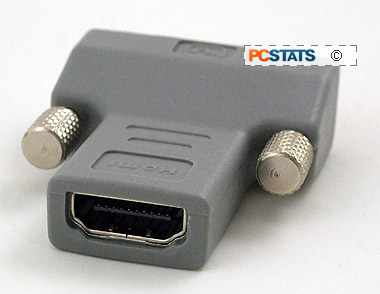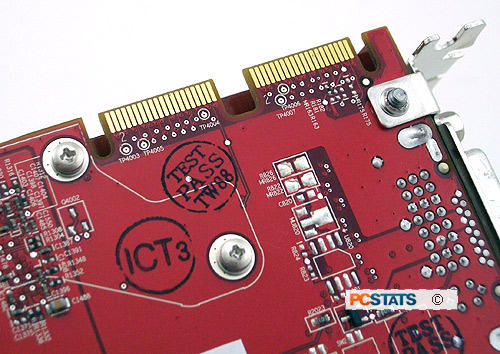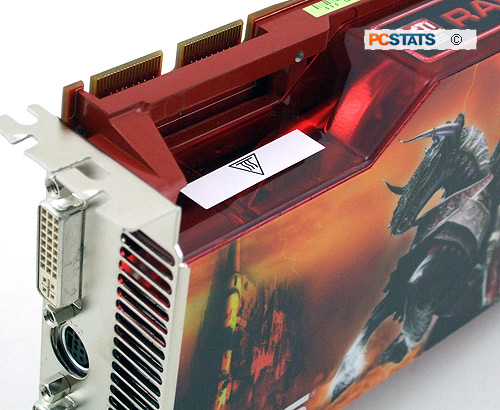The ASUS EAH4890 HTDI/1GD5/A videocard uses the PCI Express x16 2.0 bus interface and features a single Radeon HD 4890 GPU, code named 'RV790.'
The RV790 graphics chip is built on a 55nm process and packs
roughly 956 million transistors into a 282mm square GPU die. The shift in architecture from the R600 series of GPUs means that RV790 runs cooler and consumes generally less power, which in turn lets AMD's engineers turn up the overall performance. It also means that there are now 800 stream processors on board (up from 320 in the Radeon HD 3870), and 40 texture units (up from 16). DirectX 10.1, Shader Model 4.1, OpenGL 3.0 support is standard.
 The default clock speeds for the ATI RV790 are 850MHz GPU, 975MHz memory quad-pumped.
The default clock speeds for the ATI RV790 are 850MHz GPU, 975MHz memory quad-pumped.
When calculating the speed of the Radeon HD 4890's memory
we must remember the actual effective speed is 3.9GHz because it is using GDDR5
memory. The AMD Radeon 48xx series are the only videocards to take advantage of GDDR5, a memory standard that allows for quad-pumping. This means the the base 975MHz clock of the memory is actually signalling four times per clock cycle, for an effective speed of 3900MHz (975 x 4). By comparison even the latest G200 GPU NVIDIA cards are still using older GDDR3 memory, which can only be dual-pumped. NVIDIA compensates for this by using wider, 448 or 512 bit memory interfaces.
The Radeon HD 4890 supports audio through a
DVI-to-HDMI adapter, along with
H.264, MPEG-2 and VC-1 hardware decoding, as well as HDCP compliance. The HDMI output carries 7.1 channel audio, making it a great alternative if you're gaming on an HDTV or simply want to output movies from a Blu-ray DVD drive to your big screen. These technologies are collectively wrapped up in ATI's Avivo HD video and display platform which makes use of the aforementioned Unified Video Decoder 2.
ATI CrossfireX Multi-Videocard
Teaming
While we didn't get a
chance to test this ASUS EAH 4890 HTDI/1GD5/A in Crossfire, AMD's multi-GPU technology
does deserve attention.
|

ATI employ two flexible flat-wire
Kapton cables between each of the videocards' Crossfire connectors. Both
bridge connectors must be used in order to take advantage of ATI's
CrossFire technology.
|
AMD Crossfire has steadily improved in
performance and compatibility since it was first introduced with the Radeon x850 GPU.
While older Crossfire versions required a tricky master-slave card scheme in
order to function properly, the current version of Crossfire X is much more user
friendly, and supported on most of Intel and AMD motherboard chipsets. CrossfireX can be scaled
across as many four GPUs, although quad-Crossfire adopters might want to be
warned this rarely if ever gives linear performance scaling, as we've
demonstrated in previous reviews.
Heat and Noise Observations
ATI list the maximum board power draw for the ATI
RV790 based videocard at 190W. Considering that the ASUS EAH4890 HTDI/1GD5/A
videocard has two 6-pin SLI power connectors and uses a fairly substantial
2-slot wide reference heatsink, we'd be inclined to agree that the RV790
and it's associated GPU power supply generate a fair bit of heat under load. The
graphics card enlists a 4700RPM squirrel cage fan to do most of the work. Cool air is draw into the heatsink and exhausted out the rear of the PC case pretty hot. The PWM controlled fan is quiet most of the time, but at full speed it produces a sustained vacuum cleaner sound that's pretty loud.

The videocard idles around 48 degrees Celsius and under
full load hits the high 60Cs. Edges of the heatsink can get pretty hot, so if
you're using this videocard in a case with poor circulation it might be a good
idea to aim a fan a the back of the videocard for a little extra cooling.
